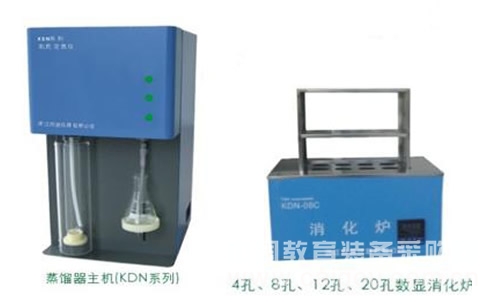
Shanghai Xinzhuang Instrument Co., Ltd. is committed to a business philosophy centered around technological innovation and advancement. The company continuously contributes to the progress of society through strategic innovations and the development of new, high-quality products. As an integrated enterprise engaged in R&D, manufacturing, and sales, we pride ourselves on delivering excellent product quality and outstanding customer service. We welcome your inquiries and look forward to serving you.
The Kjeldahl method is a widely used analytical technique for determining protein content by measuring the nitrogen content in a sample. Since the nitrogen content in proteins remains relatively constant, this principle allows scientists to estimate the amount of protein present. This method was first developed by Johan Kjeldahl in 1883 and has since become a standard procedure in many laboratories.
The Kjeldahl instrument, also known as a nitrogen analyzer, protein analyzer, or crude protein analyzer, is designed to perform this analysis efficiently. It works by digesting the sample with sulfuric acid, distilling the resulting ammonia, and then titrating it to determine the nitrogen content. This process enables accurate measurement of protein levels in various samples, such as food, feed, soil, and biological tissues.
There are different variations of the Kjeldahl method, including the micro-Kjeldahl method, which is particularly useful when only small sample quantities are available. This makes it ideal for applications where sample size is limited but precise results are still required.
Beyond its primary use in biochemical analysis, the Kjeldahl method is also applied in agricultural research, environmental monitoring, and quality control in the food industry. Its reliability and accuracy have made it a staple in laboratories worldwide.
At Shanghai Xinzhuang Instrument Co., Ltd., we understand the importance of precision and efficiency in scientific analysis. Our range of Kjeldahl instruments is designed to meet the highest standards of performance and ease of use. Whether you're working in a research lab, food testing facility, or agricultural institute, our equipment can help you achieve reliable results quickly and accurately.
Feel free to contact us at any time. Our professional team is here to answer your questions and provide the support you need. Let us help you find the right solution for your laboratory’s needs.
Material: Indoor ceramic flowerpots are crafted from clay that has been fired at high temperatures, resulting in a sturdy yet porous material. Ceramic pots offer excellent breathability for plant roots and come in a variety of finishes, including glazed or unglazed options.
Size and Shape: These flowerpots come in a diverse range of sizes to accommodate different types of indoor plants, from tiny pots for succulents to larger ones for house trees or ferns. Shapes vary widely, encompassing classic round or cylindrical pots, square or rectangular containers, or more unique shapes like oval, hexagonal, or even abstract designs.
Design and Style: One of the hallmarks of indoor ceramic flowerpots is their aesthetic appeal. They are available in countless designs and styles to complement various interior décor themes. These pots may feature intricate patterns, vibrant colors, minimalist designs, or textured surfaces, adding visual interest to indoor plant displays.
Drainage Holes: Adequate drainage is crucial for the health of indoor plants, so most ceramic flowerpots come with drainage holes at the bottom. This prevents water from pooling at the bottom of the pot, reducing the risk of root rot. Some pots also include saucers to catch excess water and protect indoor surfaces.
Weight: Ceramic flowerpots tend to be heavier than plastic or fiberglass alternatives, providing stability for indoor plants. While this weight offers security, it may also make larger pots more challenging to move around. However, smaller ceramic pots are typically lightweight and manageable.
Maintenance: Indoor ceramic flowerpots require minimal maintenance but benefit from occasional cleaning to remove dust, dirt, or water stains. A gentle wipe with a damp cloth or sponge is usually sufficient. Avoid using abrasive cleaners or harsh chemicals that could damage the glazed surface.
Cost: The cost of indoor ceramic flowerpots varies depending on factors like size, design intricacy, and craftsmanship. While they may be more expensive than plastic or terra cotta pots, their durability, aesthetic appeal, and contribution to indoor décor make them a worthwhile investment for many indoor gardeners.
Overall, indoor ceramic flowerpots blend functionality with beauty, serving as elegant vessels for indoor plants while enhancing the ambiance of any interior space. Their versatility in design and size makes them a popular choice for adding greenery and style to homes, offices, or other indoor environments.
Indoor Ceramic Flower Pot , cultivating plants inside homes, container for house plants
Yixing Bocai Pottery Co.,Ltd , https://www.bocaipottery.com